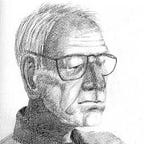Dixie in Bavaria
The word “Dixie” evokes images of southern gentility mixed with slavery and a brutal war of secession. Therefore, I was surprised by occasional sightings of the U.S. Confederate Battle Flag in Bavaria. During a western-styled horse show in my village featuring an Indian tepee and country music along with a jumping competition, I spotted a couple of Confederate flags. The following weekend, at a village beer festival, the Confederate flag decorated a temporary sidewalk bar.
In an essay by John Fuchs, author and teacher on the Civil War, he writes, “Here [Germany] the flag [Confederate] is flown as an act of rebellion against the “Bavarian occupation” as it is often (not quite seriously) called. . . . In Bavaria the Battle Flag is often used as a substitute for the Bavarian flag and can be seen flying in garden plots alone or next to the Bavarian flag. High school students sport it on their pencil cases, T-shirts, backpacks or bandanas.”
John Coski, author of The Confederate Battle Flag, says “. . . in Europe the Confederate Battle Flag is associated typically with American values and American culture. From a vantage point beyond our [U.S.] shores, the Confederate flag is an American symbol.” He also claims that “. . . the Confederate flag has actually become a swastika substitute among neo-Nazi and Skinheads in Germany, where the swastika is banned by law.”
A Bavarian secessionist theme is also voiced by a small Bavarian political party. Although almost insignificant compared to the dominant conservative and socialist parties, the Bavarian Party chafes at the “occupation” of Bavaria by the federal government. The Party is particularly vocal over tax transfers from this relative rich State of Bavaria to the poorer northern states as well as tax transfers from Germany to poorer EU countries.
So, it is no surprise to find the American Confederate flag in Bavaria. Less than 3 km away is the home of Georg Plinganser, one of the leaders of the Bavarian revolution against the Austrian Hapsburg occupation during the Spanish Succession War of 1701-1704. The Spanish Crown had no successor and European powers―Austria, France, England, The Netherlands, and Bavaria―fought over Spain. Some historians call it the first world war because it subsequently spilled into overseas territories like North America’s French-Indian Wars of the 18th century.
The Prince of Bavaria was aligned on the French side. But the Bavarian people were unwilling to go to war for their landowners and demanded independence from the authorities and self-government. In December 1705, long before the French revolution, representatives of all walks of life came together to form a secessionist parliament. The people revolted but their uprising was beaten down in a bloody war. At the end of the war in 1713 the people remained under the rule of the Prince of Bavaria.
When Napoleon defeated the German Empire in 1806, Bavaria became a kingdom that lasted from 1806 until the collapse of the monarchy at the end of WW I. After WW I Bavaria became part of the newly formed German Empire, but nationalist rejected the idea that Bavaria was part of this Empire. Largely Catholic Bavaria did not want to be ruled by a northern Protestant Prussian state. As a result many parties were formed to establish Bavaria as an independent state. Although the idea of Bavarian separatism was popular in the late 19th and early 20th century, apart from a small minority such as the Bavarian Party, most people accepted Bavaria as part of Germany.
It is surprising how a few sightings of Old, and far-away, Dixie right in my backyard can open a brief Wiki glimpse into Europe’s long and complex history—including the use of a stylized St. Andrews cross, similar to the Confederate flag, by the Russian separatists in the current Ukrainian war.
